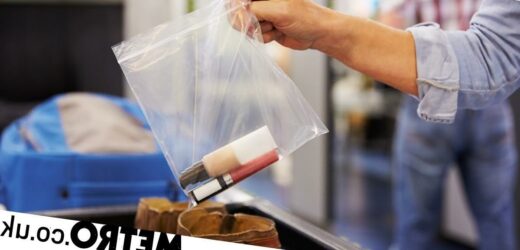We all know not to bring sharp items on planes, as well as to take off boots or belts at the security scanner.
However, with Brexit, Covid, and numerous other world events changing the goalposts, it’s hard to keep track of up-to-date travel guidelines.
Those of you who flew pre 9/11 will remember how different air travel was back then. There were very few limits on what you could bring onto the plane, and even knives (up to four inches in length) were permitted.
After the hijackings and subsequent attacks, airport security ramped up around the world, prompted by how easily the terrorists involved were able to board with dangerous items.
It wasn’t until 2006 that limits on the amount of liquids allowed in carry-on luggage were introduced, when police foiled Britain’s largest terror plot. Seeing that suspects planned to smuggle explosives through airport security in soft drink bottles, fresh restrictions were put into place.
Initially, no liquids at all could be brought in hand luggage (apart from baby milk, which had to be tasted by a parent in front of staff), but these harsh rules were eased when passenger numbers significantly dwindled.
So what’s allowed on planes today? We’ve got everything you need to know.
Can I bring liquids onto a plane?
Restrictions on the amount of liquid you can bring onto a plane apply around the world, so you should prep what you’re taking ahead of time to avoid delays at security.
Liquids are defined by the government as:
- All drinks, including water
- Liquid or semi-liquid foods, for example soup, jam, honey and syrups
- Cosmetics and toiletries, including creams, lotions, oils, perfumes, mascara and lip gloss
- Sprays, including shaving foam, hairspray and spray deodorants
- Pastes, including toothpaste
- Gels, including hair and shower gel
- Contact lens solution
- Any other solutions and items of similar consistency
To take any of these items in your hand luggage, you need to package them accordingly. The guidelines require liquids to be in the following format if they’re in your carry-on:
- All liquids must be in containers holding no more than 100ml each.
- The total of each passenger’s liquids must fit into one 20cm x 20cm reusable clear plastic bag.
- The bag must not be overfilled, closing comfortably and not tied or knotted at the top.
Avoid taking any liquids in larger containers as – even if there’s less than 100ml left in the bottle/tub – it isn’t permitted in your hand luggage.
That doesn’t mean you can’t take larger toiletries or gifts when you go abroad, but they’ll need to be packed into checked-in luggage and kept in the aircraft’s hold.
Those flying with only a carry-on can buy empty containers –or reuse sample bottles – to decant liquids into. This saves you hassle at security, as well as being more eco-friendly than buying travel minis each time.
Any liquids that aren’t compliant with security rules won’t be allowed through the checkpoint and you’ll be asked to throw them away.
Can I bring Duty Free liquids onto the plane?
Once you’ve gone through security, you’ll be greeted by an array of spirits and perfumes – and in quantities way above the 100ml marker.
Because these items are purchased in the secure departures area of the airport, Duty Free liquids aren’t subject to the same restrictions as those you bring yourself.
The quantity you can purchase may be dependent on the country of travel, so check before you go if you’re planning on a big stock-up.
There are stipulations, too, on how to board with Duty Free. Items must be sealed inside a security bag when you buy them, with the accompanying receipt sealed and visible inside.
It’s also worth checking ahead of time whether you can go between connecting flights with Duty Free liquids. You may need to go through security again at your connecting location, so find out whether the airport has any specific transfer checks in place.
Are there exemptions for taking liquid on planes?
Certain liquids aren’t subject to the same 100ml hand luggage limit. These include:
- Liquids for essential medical purposes
- Liquids for special dietary requirements
- Baby food or baby milk
Those that are medically exempt must show supporting documentation from a relevant medical professional (such as a doctor’s letter or a copy of your prescription).
Baby food is allowed in hand luggage as long as a baby is present, but breast milk must be in containers of no more than two litres. Frozen breast milk is not permitted to be taken in hand luggage.
In general it’s always best to take a look at the website of the airports you’re travelling from. That way you can ensure you’re adhering to any guidelines, and won’t be stopped by security as you head off on holiday.
Do you have a story to share?
Get in touch by emailing [email protected].
Source: Read Full Article




